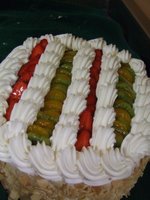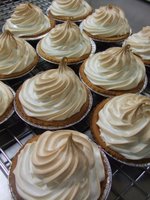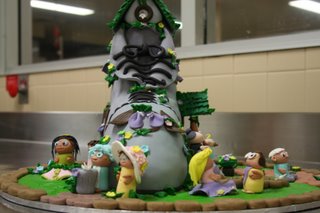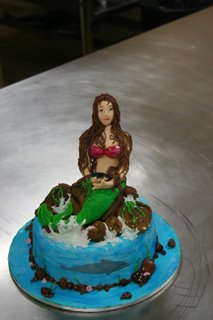Japonaise Gateau Meringue Production
We are getting closer to the final exams and we now have made each of the products that make up your assessment tasks.
As the Japonaise is part of your assessment I have included as many pictures as possible to show you how to build the gateaux. Remember planning is a key component to your success in an exam, ask me if you are having problems or are unsure what the expectations are prior to week 18!!
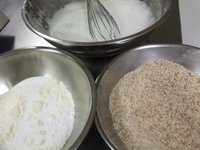
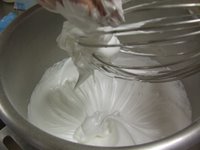
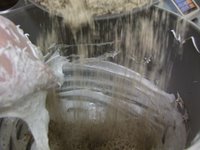
Ensure when you start the Japonaise you have all your ingredeints ready to go, remember the egg white will need to be reconstituted with the recommended amount of water. Take care not to overwhip the egg whites. Be careful not to fold the dry ingredients too much or you will lose a lot of the aeration in your product.
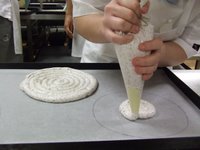 Carefully pipe the meringue discs for the Gateaux, remembering to allow space between the discs. Pipe the remaining meringue onto a baking tray as this will be used for masking.
Carefully pipe the meringue discs for the Gateaux, remembering to allow space between the discs. Pipe the remaining meringue onto a baking tray as this will be used for masking.
Your assessor will be looking at not only that you have used the correct method of production for the meringue but also correct piping techniques and work practices.
As the Japonaise is part of your assessment I have included as many pictures as possible to show you how to build the gateaux. Remember planning is a key component to your success in an exam, ask me if you are having problems or are unsure what the expectations are prior to week 18!!



Ensure when you start the Japonaise you have all your ingredeints ready to go, remember the egg white will need to be reconstituted with the recommended amount of water. Take care not to overwhip the egg whites. Be careful not to fold the dry ingredients too much or you will lose a lot of the aeration in your product.
 Carefully pipe the meringue discs for the Gateaux, remembering to allow space between the discs. Pipe the remaining meringue onto a baking tray as this will be used for masking.
Carefully pipe the meringue discs for the Gateaux, remembering to allow space between the discs. Pipe the remaining meringue onto a baking tray as this will be used for masking.Your assessor will be looking at not only that you have used the correct method of production for the meringue but also correct piping techniques and work practices.

